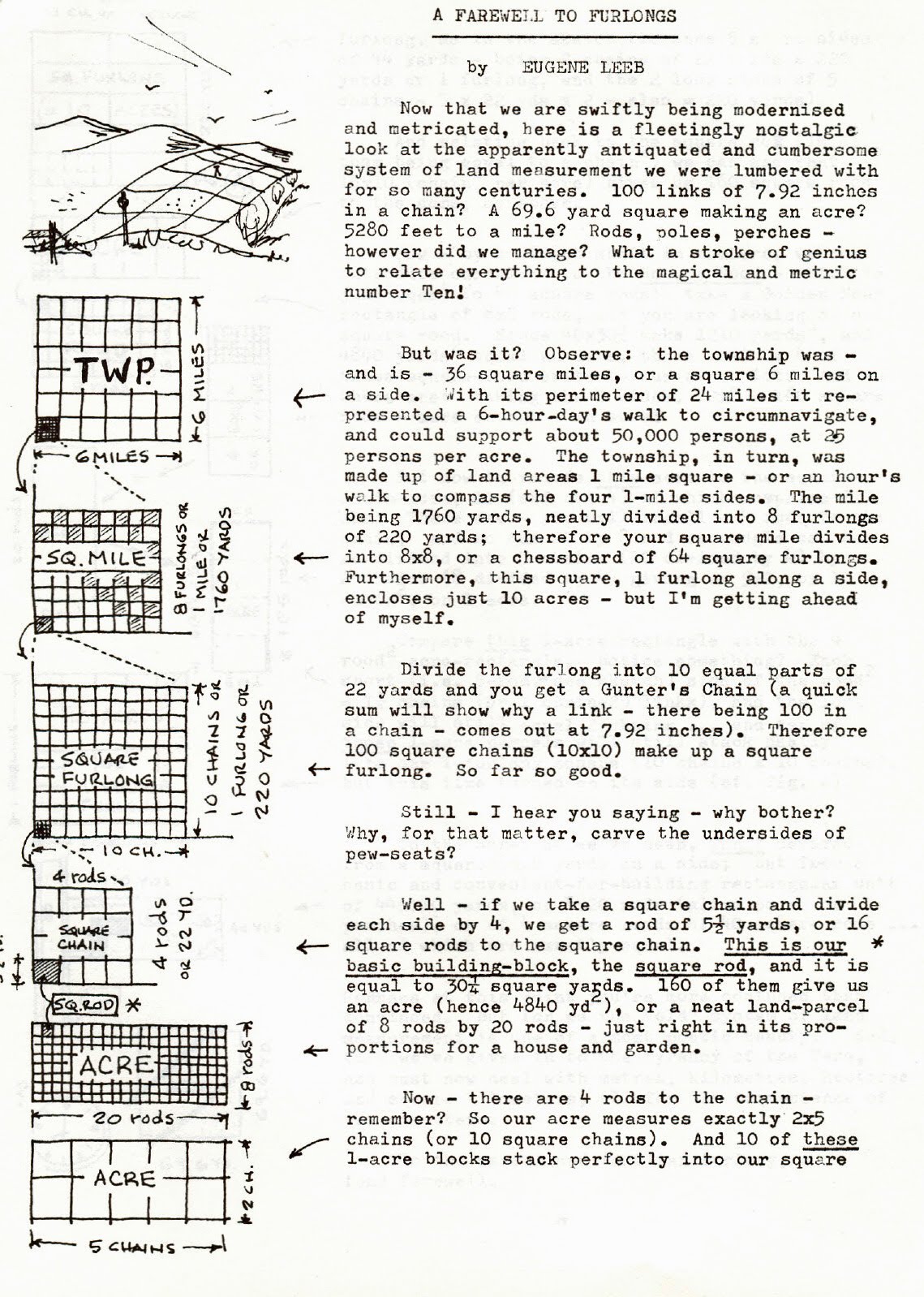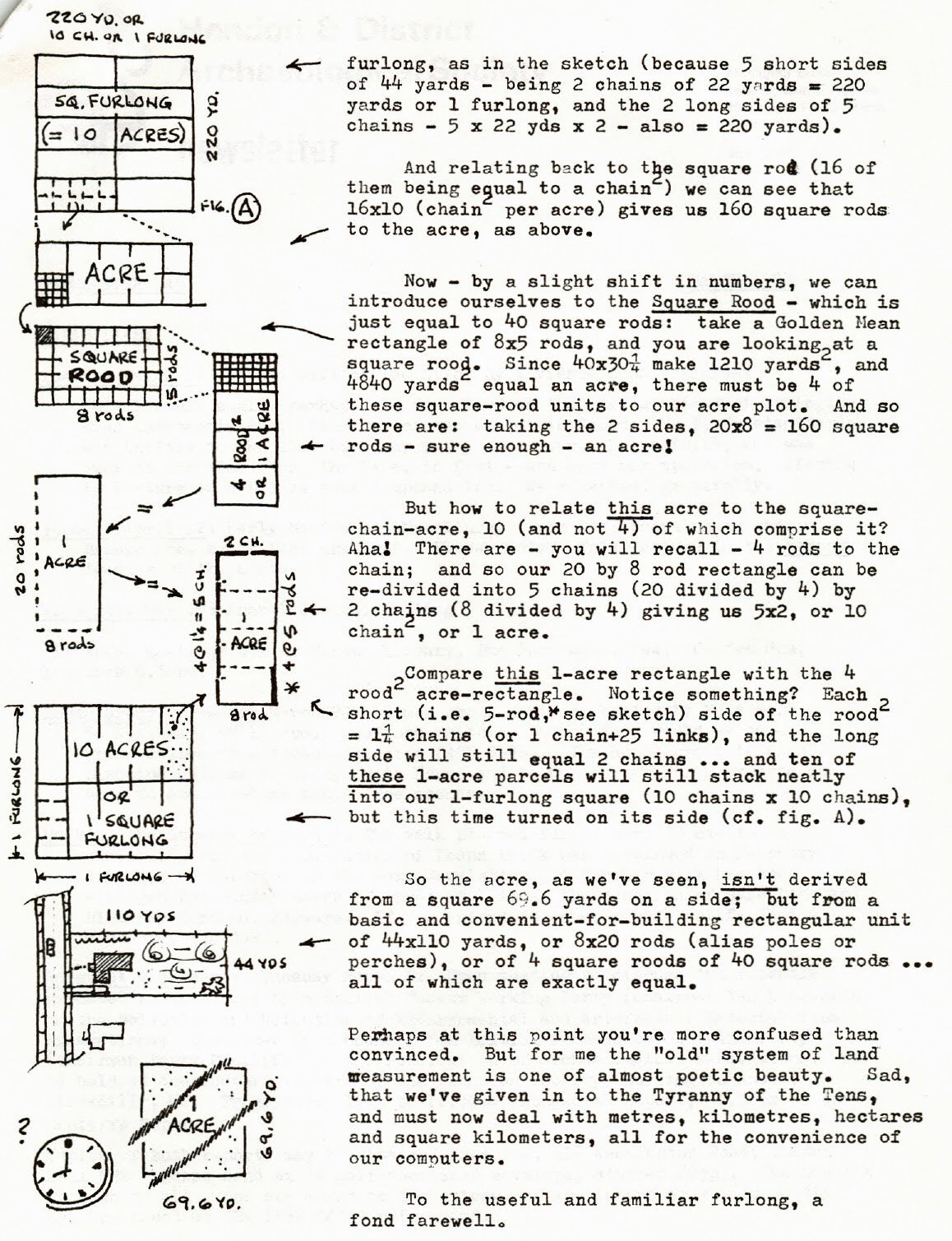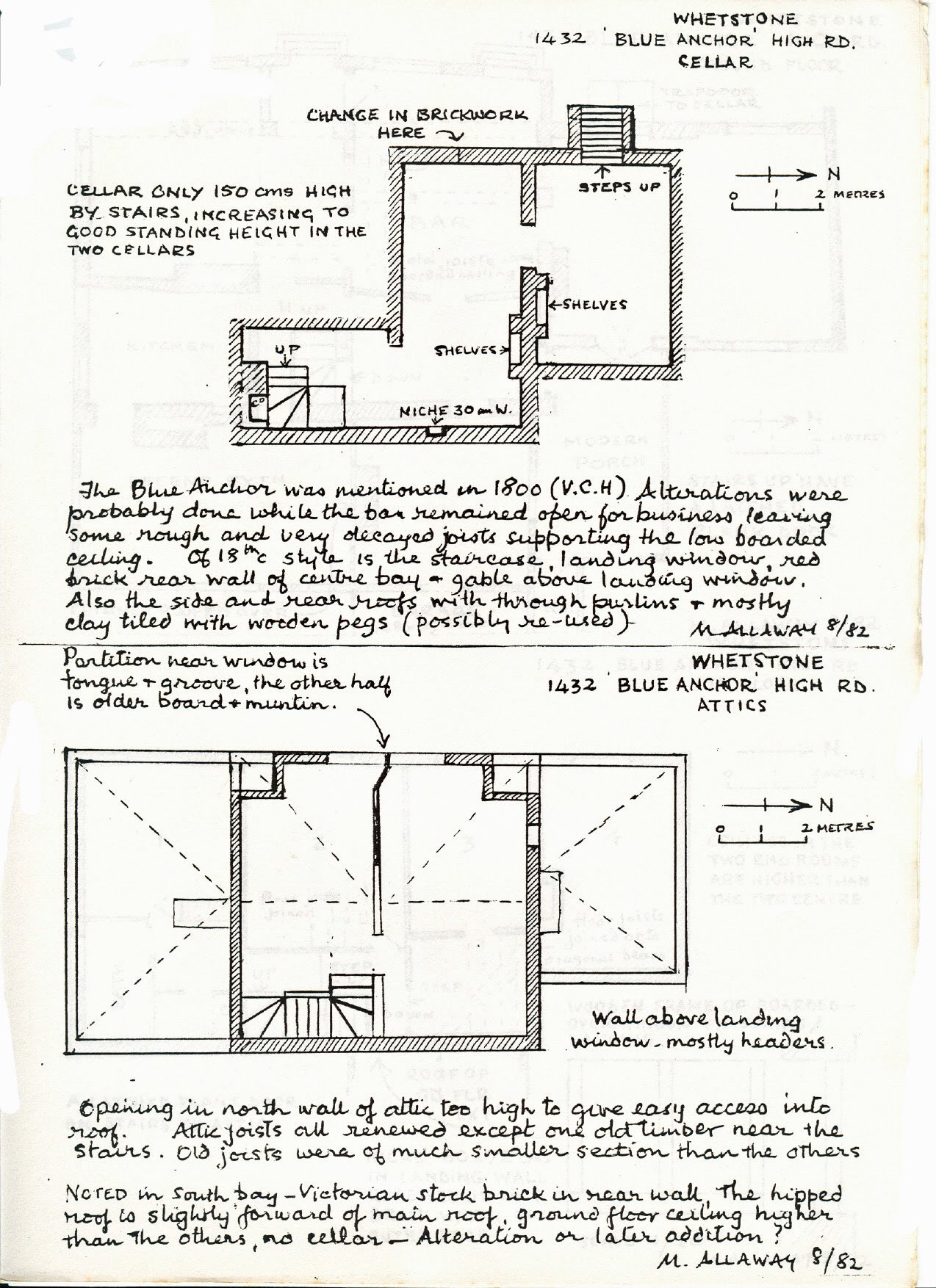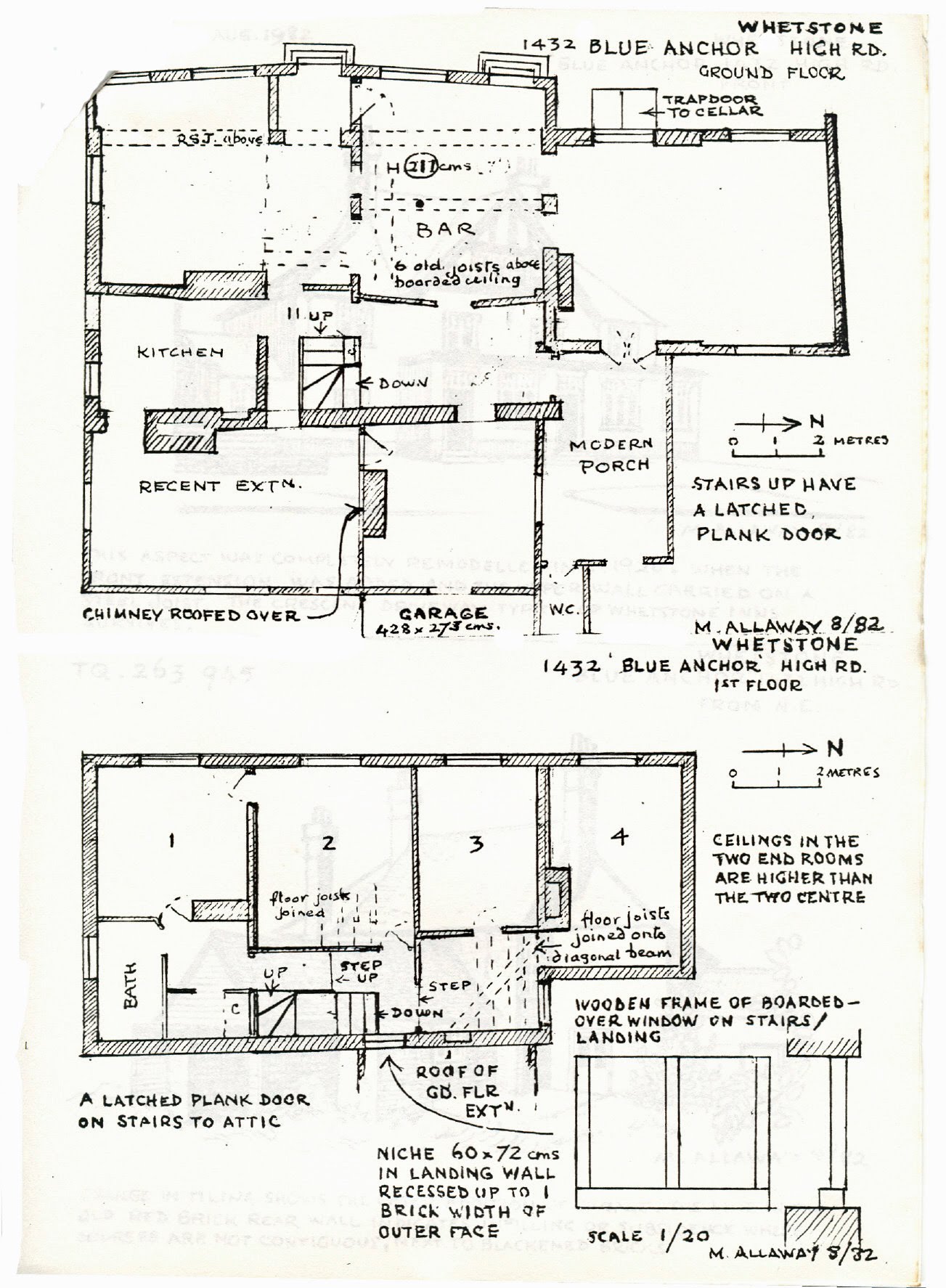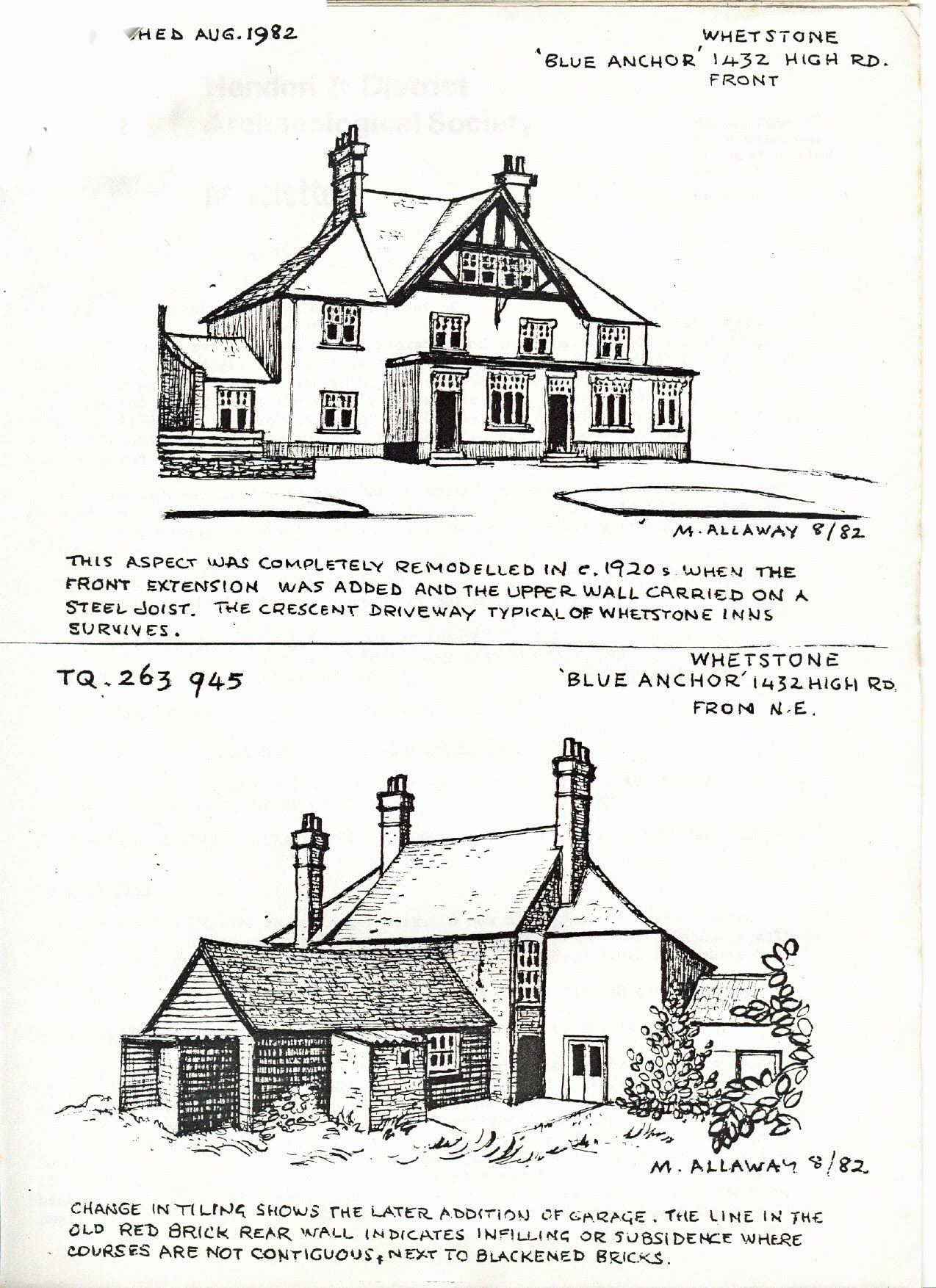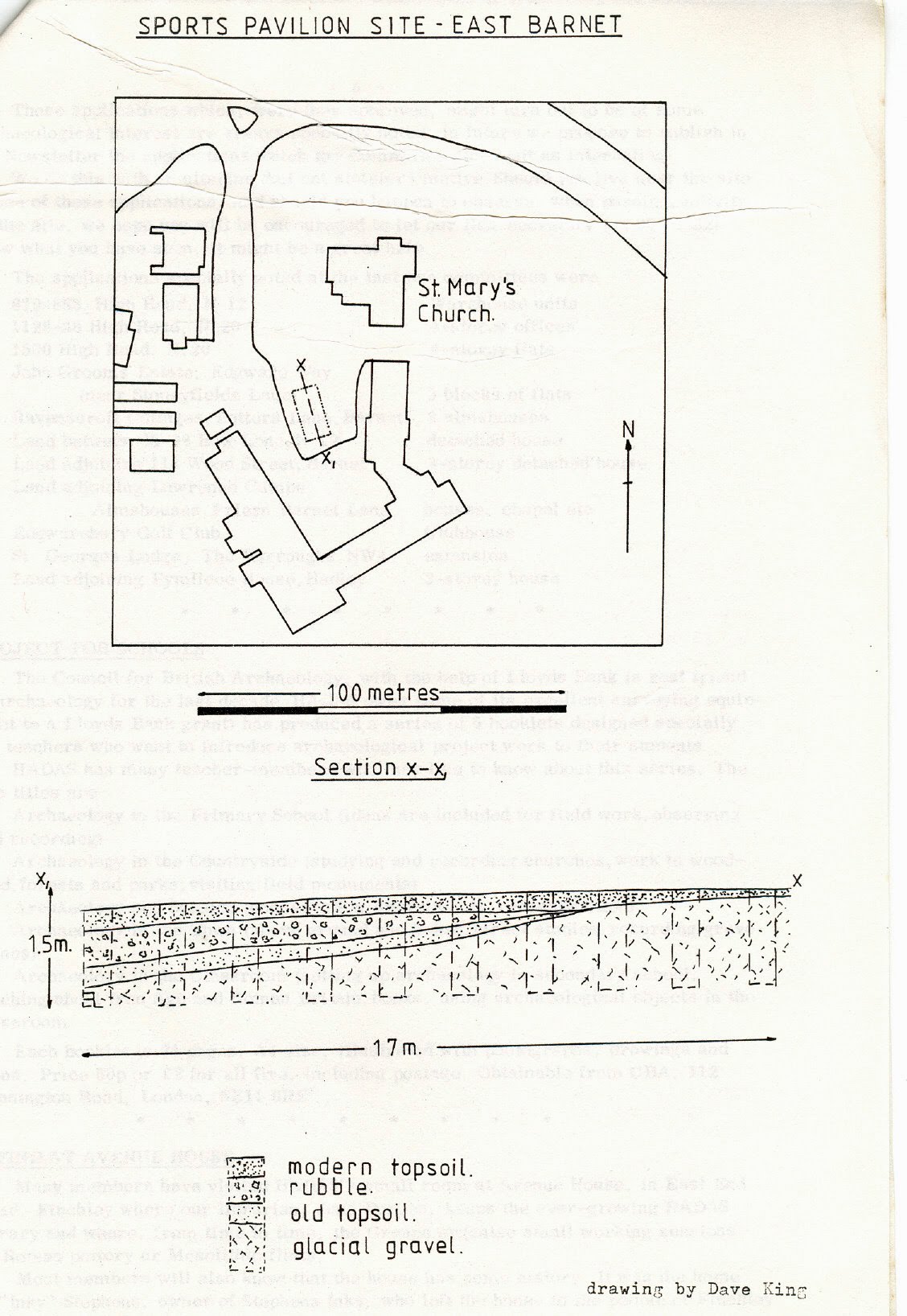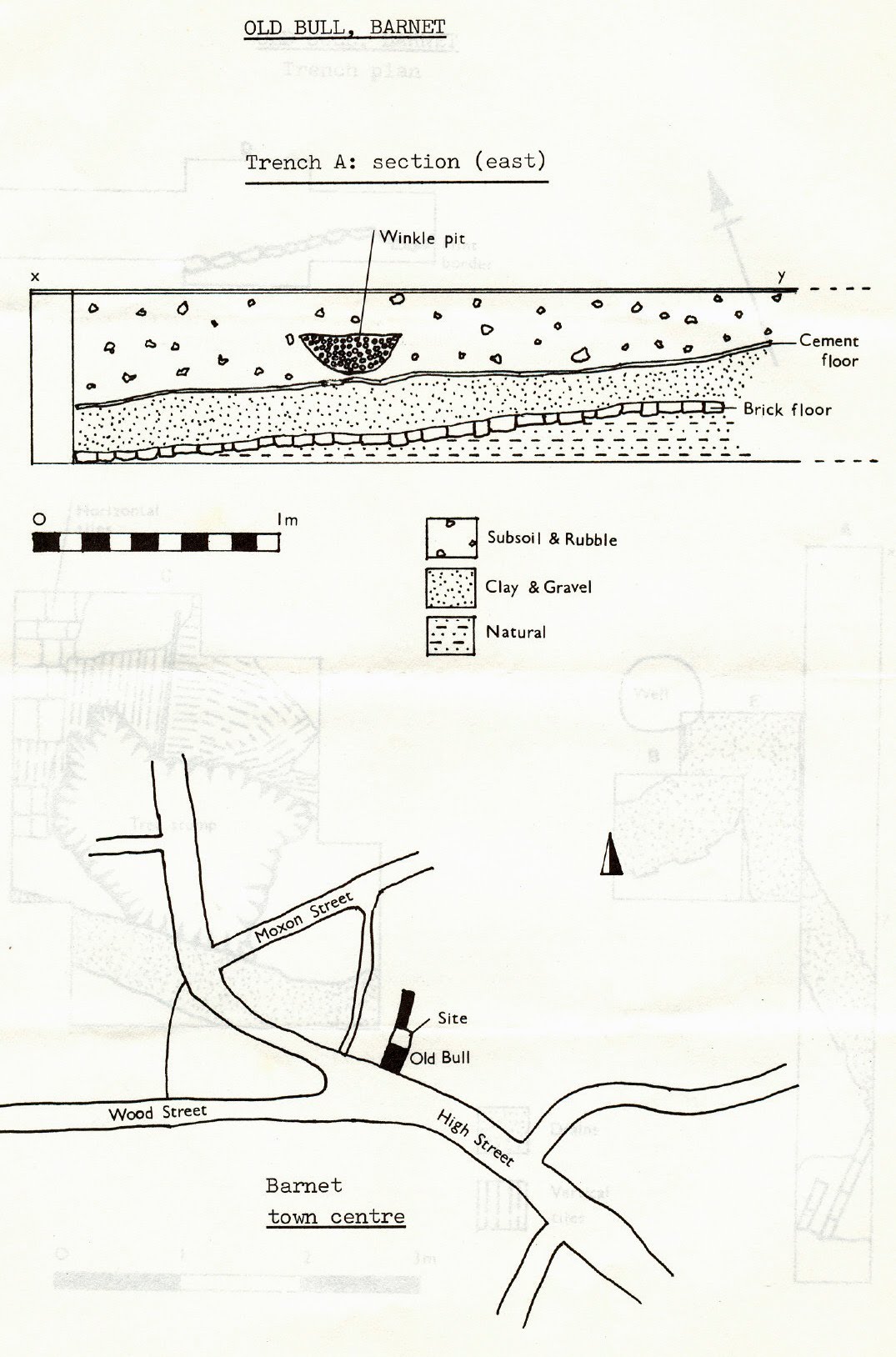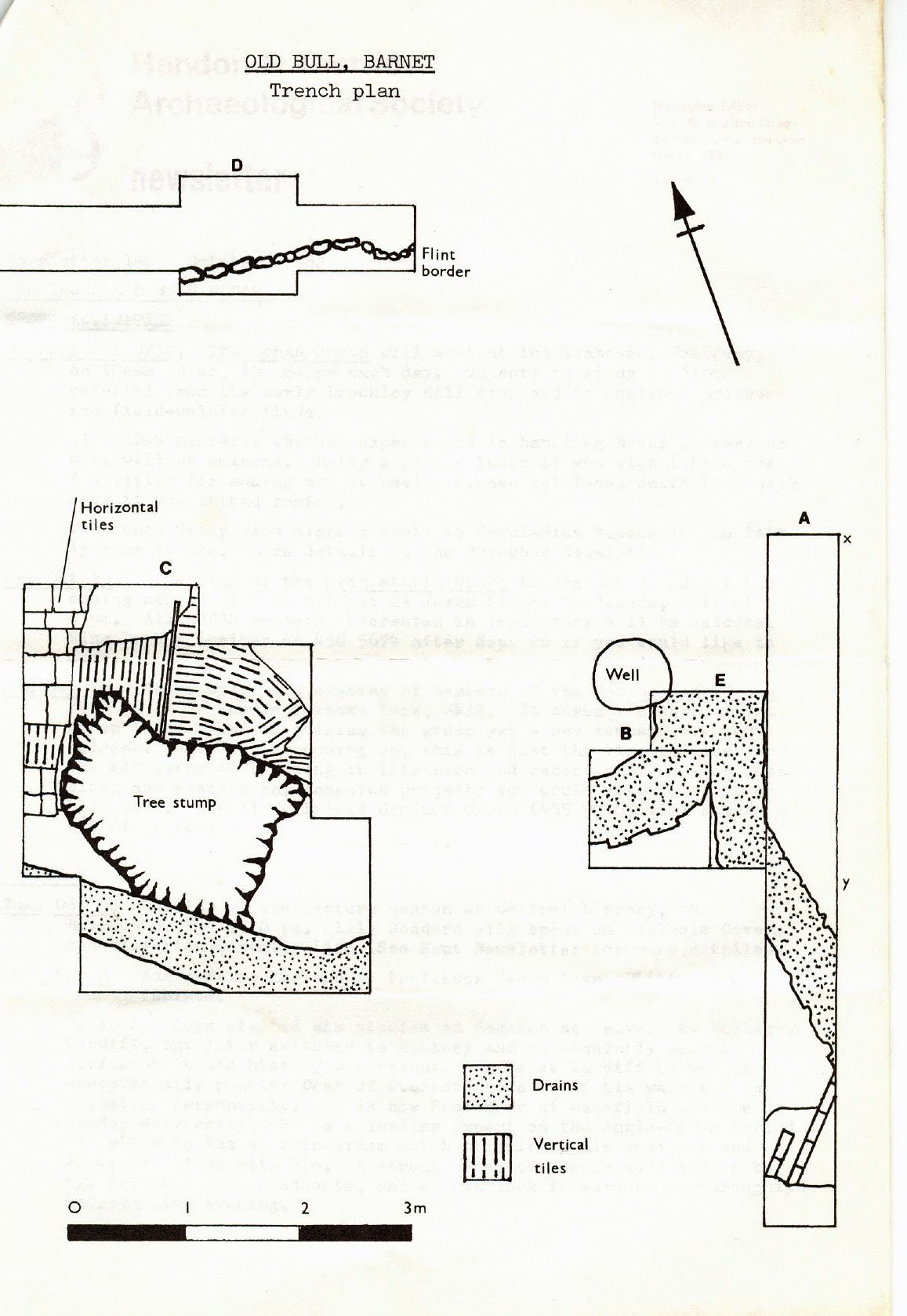NEWSLETTER 145 MARCH 1983
HADAS DIARY
Tuesday March 1: Egypt, Gift of the Nile, by Vivienne Constantinides
This lecture could, perhaps, be described as the most gracious of apologies. Miss Constantinides, daughter of the society’s founder Mr T. Constantinides, was invited to the 21st birthday party last year. Regretfully, she was away at the time – on the Nile, in fact and sent her apologies, offering to lecture to HADAS was some compensation. We accepted, gratefully.
Tuesday April 12: Early Mining and Metallurgy, from its inception to the
Bronze Age, by Dr Paul Craddock. Please note: This lecture is the second Tuesday of the month.
Wednesday May 184 Annual General Meeting
All these meetings are at Hendon Library The Burroughs, NW4 Coffee 8pm, lectures 8.30pm.
Roman Group:
Tuesday March 29: Roman group meeting, hosted by Enid Hill, 56 Northway, NW11, 8pm. Everyone welcome, though Enid would welcome prior notice from those attending (455 8388). The Roman group is also planning outings to Welwyn Bath House and to Colchester, with experts on hand to show members behind the scenes.
Walking the Streams of Barnet: The walk planned for January 30 had to be cancelled, but the exploration of Deans Brook was continued on February 20 and will be reported in the next Newsletter. A further walk has been arranged for Sunday March 6 – meet at 10am at the junction of Hale Lane and Highview Gardens, Edgware. If you intend to come, please notify Sheila Woodward, 952 3897.
An event elsewhere: Tuesday March 8: Open meeting to discuss two recently produced reports: one by a British Museum Working Party (Chairman Ian Longworth) on the Selection and Retention of Environmental and Artefactual Material from Excavations; the other by a Council for British Archaeology Working Party (Chairman Barry Cunliffe) on the Publication of Archaeological Excavations. To be held at the lecture theatre of the Linnaean Society, Burlington.House, Piccadilly, W1. Programme: 11am to 12.30pm Longworth Report; 1.30pm to 4pm Cunliffe Report.
Copies of both reports may be obtained from CEA, 112 Kennington Road, London SEll 6RE (please send an A4 Self-addressed envelope, stamped 20½p). The meeting is open to all. You are asked as a courtesy, if you intend to go, to notify Lyn Greenwood at CBA (582 0494) beforehand.
Barnet’s Neighbour is the title of the current exhibition at Church. Farm House Museum, celebrating 50 years of the Stanmore and Harrow Historical Society.
There’s much of neighbourly interest, and it remains on show until March 13.
ELIZABETH ALDRIDGE
West Heath diggers will be saddened to hear of the death of Elizabeth Aldridge at the end of January. Only 42, Elizabeth had been disabled for 15 years and had also been fighting cancer for the last two years of her life.
Liz was a person of immense courage and gaiety and so made light of her disabili-, ties that her wheelchair was seen forgotten in the enjoyment of her company and it was not allowed to interfere with her many activities Among these, processing and section drawing at West Heath were just two. Liz not only sailed through her extra-mural Diploma in Archaeology, wrestled with the organisation of site watching for HADAS, but she also founded the Highgate Antique Collectors’ Club and still found time for Church and other Highgate activities.
Liz will be much missed and it will be a long time before her example is forgotten. We send our deepest sympathy to all her family and are very pleased that her son, Simon, is still a junior member.
PINNING DOWN THE PAST
In a little under an hour, Dr. John Alexander pinned down the past most compre hensively for HADAS members at the February lecture. Not that that was surprising, given that Dr Alexander’s subject was the Origins and Development of the Safety Pin.
That modest invention, so useful to generations of modern mothers, was not the Victorian inspiration it might have been assumed he revealed. There was a 19th century patent for it, taken-out by an enterprising American and turned into a fortune in hard cash by the-Birmingham manufacturer who bought it from him for just 000. But the American’s design did not copy one of the few safety pins which had survived through medieval and later times.’ It bore far more resemblance to those early in the European pin tradition, back in the first millennium BC.
“Small inventions like the safety pin often get very little attention,-even though the impact they-made upon society was very considerable,” said Dr Alexander, explaining his own reasoning for studying them. “Once invented, the safety pin took on various roles apart from simply holding clothes together. It developed into very decorative brooches, it was used-to indicate status in’ society.
His detailed study had shown several thousand different types were in use in first millenium BC Europe, and far more throughout the world. Study of them helped in the recognition of regions and trade connections and in dating. They were found in graves and at settlement sites, in-votive deposits, in craftsmens’ hoards.
Safety pins- or fibulae as they were more familiarly known to archaeologists – may well have developed from long thin shoulder pins, pierced to-take a piece of wire or ‘cord to aid their fastening potential. Simple pins-of the safety type tame into use in the northern part of the European plain around 1200 to 1000 BC and the style lasted for some 600 years. A quite different-line of development could be traced in the northern Alpine region, spreading through into Greece even. And the safety pin was eventually in use from Scandinavia to Persia. It was, particularly, the badge of the Celts.
Dr Alexander’s slides showed the variety of pins, plain or highly decorated. Prizes among the latter are surely due to an.extraordinary Etruscan ‘find, in gold, and another, also in gold, in Scythian style, the functional pin decidedly inferior to its animalistic decoration.
The Romans’ effectively killed off the safety pin, wearing clothes which rendered
it unnecessary, Dr Alexander continued, though “whenever the Roman ‘Empire collapsed
safety pins came flooding back”. But only temporarily, for from the middle of
of the first millenium AD to the 19th century they were little usedI
“Even if the origins and early development of these fibulae are now fairly obvious there are many thousands of safety pins that can be studied and fitted into the general pattern,” he said, exhorting his audience to do the work. “There is work waiting to be done on their local significance, who was wearing what kind, which sort of social or sexual grouping was wearing them in which region. This knowledge will only come through very detailed study of the ways of making them and styles of ornamenting.
“When their distribution and associations are worked out, and their chronological position, then perhaps eventually their social significance will be worked out. Certainly for the first millenium BC we will know much more about what is now an obscure set of communities.”
LIZ SAGUES
AN UN-AXE-PELTED SHOPPING TRIP
One of the most appealing things about archaeology is its unexpectedness. One of our members was going shopping the other week – just an ordinary everyday trip to the butcher and baker. As she passed a friend’s house, out he came. “Hey,” he. said, “I’ve got something for you – something you can use in exhibitions or suchlike.” He dived back inside, returning a moment later with a plastic carrier.
“It’s rather heavy, I’m afraid,” he said, handing it over. It. was it weighed a metaphorical ton. However, when she got it home she knew it was worth every ounce. Inside were 11 Paleolithic hand-axes, in dark grey flint with tobacco brown streaks. They range in size from the tough largest, which are roughed-out, unfinished shapes between 5.8 and 6 inches at their longest and 3.7 and 4 inches at their widest, to .a completed job, which fits snugly into the palm of the hand and is 3.5 inches by 2.8 inches at its maximum points..
Alas, the donor had no idea of the provenance. They had been given to him with no word of whence they came. He will try to find out, but is a bit doubtful of success.
However, though their archaeological value is minimised by this fact, they will be very useful as specimens for demonstrations, displays, etc. And they do underline the text with which we began. Who else but an archaeologist could return from a shopping trip with 11 stone axes, thousands of years old, nestling between four fillets of plaice and a pound of sprouts?
ROMAN EXIT
The End of Roman Britain was the subject of the CBA Group VII conference at Welwyn Garden City on February 19. Five papers were read by a distinguished list of speakers – Coinage and the End of Roman Britain by Richard Reece, Farming in the First Millenium by Peter Fowler, Roman to Saxon Mucking by Margaret Jones, Towns of the South East in Later Roman Britain and Beyond by Harvey Sheldon and Problems of the Late Frontier as exemplified by Wroxeter and North Wales by Graham Webster, with a splendid review of the proceedings by Kate Pretty.
There was general agreement about the timing of the collapse of Roman rule in Britain – new issues of coinage end about 410 AD, town life declined at different times though Wroxeter continued into the 5th century and many villas in the country-side continued in occupation as well, until economic reasons or personal danger caused them to be abandoned. The official connection with Rome ended in 410, but Roman civilisation was to some degree maintained until 442.
No doubt a large section of the population continued to live in their own area merely changing Roman rulers for Saxon. Others moved to the west of England.
At Mucking, in Essex, there was a site in occupation from Neolithic to medieval times. Saxon houses have been found on top of Roman dwellings and Roman artefacts and Roman technology were adopted. A radio-carbon date of 470 for Anglo-Saxon material suggests that there may not have been much of a time lag between Roman and Saxon occupation.
ENID HILL
ROUND-UP OF REVIEWS
So many publications have stacked up recently for review in the Newsletter that all we can offer you is a quick skip-through.
First, four books from Shire Publications – the first three in the Shire Archaeology series, the fourth another “Discovering”.
Medieval Roads, by geography lecturer Brian Paul Hindle; 29 pages of text, 21 pages of graphs and maps (showing itineraries of medieval kings and reproductions of part of the Matthew Paris and Gough maps) and 11 pages of photographs. Throws light on a rather neglected subject.
Medieval Fields, by David Hall; 55 pages of mixed text, photos and plans of field systems, written by an archaeologist. Good material on how to reconstruct
medieval open-field furlong patterns even when a ridged field has been virtually ploughed flat in modern times.
Village Plans, by Brian K. Roberts (another geographer). Only three photographs (a miniscule number for a Shire book) but many plans, distribution maps and models. Some of these are reproduced in too small a scale to be useful. An attempt is made to classify types of villages according to basic shapes, regularity or irregularity of pattern and presence or absence of greens. Interesting, but rather heavy going.
Discovering Churchyards, by Mark Child. Eighty-page booklet (centre 16 pages photos) with irdex and bibliography. This is a “dipping” book rather than a steady read. There are, among other plums to be plucked from it, a slightly hit-and-miss list of famous.graves, ranging from Algernon Charles Swinburne (buried Bonchurch, Isle of Wight) to Unity Mitford (Swinbrook, Oxon); a survey of lychgates and boundaries; a chapter on churchyard crosses; something on types of memorial, from headstones and graveboards to chest, bale and tea-caddy tombs; and a section on the flora and fauna of the churchyard.
All the above are available from HADAS, the first three price £1.95, the fourth£1.75, plus postage. Don’t forget that Pete Griffiths has taken over as distributor of publications, so you can get these from him at 8 Jubilee Avenue, London Colney, Herts AL2 1QG (phone 61 23156).
Archaeology in Camden: 12-page illustrated booklet produced by the Inner London Archaeological Unit, price 80p including postage from Imex House, 42 Theobalds Road, WC1X 8NW. Interesting for HADAS members because it mentions the West Heath dig and has a photo of the site (by Peter Clinch) and of some of the finds (by Eric Ward).
The Kemps of Hendon and Church Farm House, by F.W.H. Abrams (published by the Mill Hill and Hendon Historical Society). Story of the Kemp family’s Hendon links onwards from Tudor times, when they leased the moated manor of Clitterhouse from St .Bartholomew’s Hospital. Details of Daniel Kemp’s tenure of Church Farm and the building which is now Church Farm House Museum. Obtainable at £1, including postage, from John Collier, 47 Longfield Avenue, NW7 2EH.
The Ravenscrofts: Barnet and District Local History Society Bulletin No. 22 (November 1982). This account, by Ralph Walker, follows three generations of a family linked with Chipping Barnet in the 17th century. After first-providing the family background in 16th century ?lintshire, Mr Walker brings Thomas
Ravenscroft (whose effigy can be seen in the Ravenscroft chapel of Barnet Parish Church) to Fold Park, Galley Lane, Barnet. Thomas was father of Barnet’s “great benefactor”, James Ravenscroft (1595-1680), who endowed the Ravenscroft alms houses, or Jesus’ Hospital, in Wood Street,HADAS members interested in this booklet can find out further details from Mr W.S. Taylor, Curator of the Barnet Museum, Wood Street, Barnet.
Camden History Review No. 10 Another excellent issue in this series by the Camden History Society. This is the last issue to be edited by Christopher Wade, who has many links with HADAS. Members who came to the 1982 Christmas dinner will remember him speaking on the history of Burgh House, of which he is the honorary curator. Articles in the review include one on H.G. Wells’ Camden connections; Georgian Catholics in Hampstead; census studies in the Vale of Health; Highgate’s Fitzroy Farm; and winning essays in a competition about Camden schooldays.
Copies from 28 Willoughby Road, NW3 1SA, £1.90 plus postage.
Cuttings from the Harrow Observer for 1932, compiled by Gordon Dodd. This 30-page roneod publication is the golden jubilee edition of Chronicle, the Stanmore and Historical Society’s journal. The society was founded in 1932 as the Edgware and Stanmore Historical and Antiquarian Society. We start at the top of page 1 with what was showing at the Cosy Cinema, Harrow on the Hill, on January 1 1932 (Richard Barthelmess and Clark Gable in The Finger Points, Richardo Cortez and Loretta Young in Big Business Girl), and we go through to December 30 1932, when the leading article has some depressing – but so familiar – points to end on: “The year has been a disappointing one to all classes of the community and it leaves most people poorer than they were at the beginning. Unemployment has increased, wages have been reduced, salaries cut, and those who have what the tax authorities called an ‘unearned income’ find themselves with mostly reduced dividends or none at all… The Few Year holds out no very definite promise of incomes going up or of income tax coming down…” Copies of the booklet are obtainable from Roy Abbott, 7 The Ridgeway, Stanmore, HA7 4BE, price 50p plus 20p postage.
HADAS FIELD GROUPS
The committee of HADAS recently gave its approval for the setting up of Field Groups throughout the borough. The groups will be mainly responsible for identifying by means of surveys, site-watching, field-walking, etc, potential sites for excavation and reporting features noted in trenches on building sites, particularly in areas of known archaeological interest. Much of the job requires a network of people able to keep an eye on their local area and for which no expert knowledge is needed.
Two groups are already in action – Finchley and Edgware and it is hoped that other groups will be formed soon. If you are interested in taking part and have not yet been contacted, get in touch with:
Mr G.H. Musgrove (346 0128) for the Church End and St Paul’s wards of Finchley Mrs T.M. Smith (958 9159) for the Edgware area
Mr A.F. Dean (205 3201) for the Burnt Oak area
For other areas contact Elizabeth Sanderson (950 3106) who is co-ordinating the activities of the groups. She would particularly like to hear from people who are able to visit any of the borough planning departments during office hours to look at planning applications.
June Porges writes: I regret that owing to a little absent-mindedness I have no record of the donors of some of these publications. I would like to know the members who gave them if they would care to contact me. In the meantime, many thanks to the named and to the un-named.
Council for British Archaeology: Archaeological Bibliography for Great Britain
and Ireland 1977.
Council for British Archaeology: Archaeology in Britain, 1980 and 1981.
London and Middlesex Archaeological Society: Transactions, vol 32, 1981.
Popular Archaeology May 1980, July 1982.
World Archaeology, vol 14, no 1, June 1982 Quantitative methods.
Omnibus (a new magazine for sixth-formers and others interested in the ancient
Greeks and Romans, published by JACT) Nos 1-4, 1981 and 1982.
Fedden, R(ed) Treasures of the National Trust, Cape, 1976.
Wilkinson, F. The castles of England, Philip, 1973.
Lawson, A. Discover Unexpected London, Elsevier Phaidon, 1977.
Larousse Encyclopedia of Prehistoric and Ancient Art, Hamlyn, 1970.
Voronikhina, L. The Hermitage: guidebook.
Oakley, K.P. Man the Toolmaker Sixth edition, 1975.
Colyer, C. Lincoln: The Archaeology of an Historic City, 1975.
Working party of the Ancient Monuments Board for England Committee for Rescue
Archaeology: Principles of Publication in Rescue Archaeology, Department of
the Environment, October 1975.
Bagshawe, R.W. Roman Roads, Shire, 1979.
Hedges, A.A.C. Bottles and Bottle Collecting, Shire, 1975.
Harris’, R. Discovering Timber-Framed Buildings, Shire, 1978.
Hodgkiss, A.G. Discovering Antique Maps, Shire, 1975.
British Museum Society Bulletin, March and November 1979, March and July 1980
Bulletin of Experimental Archaeology, no 3, 1982.
Burgess, C. Excavations at Houseledge, Black Law, Northumberland, and their implications for earlier Bronze Age settlements in the Cheviots, Northern
Archaeology, I (1) 1980, pp 5-12.
Jobley, G. A Field-guide to Prehistoric Northumberland, part 2, Northern
History booklets No 46. (photocopy)
From Miss V Sheldon:
Farquhar, J.V.C. The Saxon Cathedral and Priory Church of St Andrew, Hexham,
1935.
From Philip Venning:
Vafpoulou-Richardson, C.E. Greek Terracottas, Ashmolean Museum, 1981.
Aaron, H. Pillar to Post: Looking at Street Furniture, Warne, 1982.
From Ted Sammes:
The Scroll: journal of the Maidenhead Archaeological and Historical Society,
vol 3 nos 1-5, September 1977 – Autumn 1982.
DOCUMENTARY GROUP ON THE TRAIL…
One project on which the Documentary Group is currently working concerns a leaflet on the Archaeology of the Borough of Barnet, to be published later this year by LBB Council.
Many HADAS members will remember the Town Trails which the Borough Planning Department produced a couple of years back. There were four of them, on Hadley, Mill Hill, Church End, Finchley and Hampstead Garden Suburb. (At about the same time the Libraries Department published a fifth Town Trail on Hendon.)
The first four trails were concertina-like leaflets which, when opened, contained maps, line drawings and an explanatory text about each locality. The Planning Department is now working on a leaflet in a similar format (though not a Town Trail) which will des ribe the known archaeological sites in the borough and the various chance finds which have been made, as well as giving a few general ideas about the aims and techniques of archaeology.
The idea of this leaflet was first floated at a meeting organised by the Planning Department to which representatives of the Mill Hill and Hendon Historical Society, the Barnet and District Local History Society, HAMS and LAMAS were invited. Following this meeting it was agreed that HADAS should be responsible for collecting together the material for the text of the leaflet, and this has now been done, with the help of several members, including Daphne Lorimer, Brigid Grafton Green, Ted Sammes and Bill Firth.
Now the information is assembled it’s surprising how much there is to say about archaeology in our area: at the moment we’re wrestling with the problem of how to cram an archaeological quart into a pint-sized leaflet. We’ll let you know how we get on!
BRIGID GRAFTON GREEN
A THURSDAY LAMENT
All the indications are that, next evening lecture year, there’ll be a sad omission from the University of London Extra-Mural Department prospectus – the Thursday evening lectures at the Institute of Archaeology, which for so long have been used as a platform to air new archaeological information in series with a variety of expert speakers expounding on a common theme.
The reason for their ending, though it may be only temporary, is two-fold. The first, and most distressing, is the poor attendance. This year particularly some
evenings – in a season hampered only once by weather problems – saw only a dozen faithfuls scattered about the institute benches. Inevitably, such lack of support means a hefty loss and the cut-hit extra-mural department simply cannot afford to continue that. Second is the pressure on the time of extra-mural lecturer Tony Legge, who needs to visit more of the department’s archaeology classes. With his own lecturing commitments in diploma and post-diploma classes, plus taking the chair on Thursdays, there’s effectively only one evening left for class visits.
If we’re lucky, the lectures may be resumed after an interval of a year or two.
HAMS members have been less enthusiastic than usual in their support of the 1982-83 series, on New Techniques in Archaeology. Few, even, turned up to support member Paul Craddock, whose subject last month was not that on which he’ll be speaking in the HADAS April lecture (he’d given that at the very beginning of the series) but one of particular interest to anyone who has worked on the West Heath dig.
He was describing the technique of soil phosphate analysis, to identify sites of past human and animal habitation through the phosphate-rich rubbish which had been deposited and which remains easily and cheaply identifiable today despite the passing of years or the disturbance of sites. He tried out the technique at West Heath, though that was not among the sites he talked about last month. Instead, he revealed how phosphate study showed that the body of the Saxon king
Redwald could have been buried at Sutton Hoo, how work in the Fenlands project had revealed an iron age village where no archaeological remains had previously been suspected, how it seemed that the neolithic and bronze age flint miners at Grimes Graves had no settled habitation in the vicinity and how crucial evidence could be recovered from sites otherwise so ploughed out that they seemed totally archaeologically barren. Another, earlier, talk was also essential for Mesolithic enthusiasts, though as Peter Rewley-Conwy was standing in at the last moment for a flu-struck expert on the microscopy of ancient ceramics there could have been no advance warning of the subject.
Dr Rewley-Conwy described his work on the Danish late Mesolithic sites of the Ertebolle culture, where he had established a pattern of unusually settled habitation, based on central campsites, where a variety of natural resources were used. These central sites were supplemented by seasonal camps whose occupants exploited particular seasonal resources – wild pigs, porpoises, eels, cod, whooper? wens and, crucially, oysters. Oysters, he said, formed only a small proportion, if the diet, some five to ten per cent of the calorific total, but their availability in the early spring.when other resources were scarce was vitally important. And the changes in seashore conditions around 3,000 BC, which prompted a decline of the oyster beds, had been the factor which had upset the delicate balance of the Ertebolle economy and led to the acceptance of farming.
I’d have regretted missing, too, Harry Kenward’s entertaining and informative, if hardly always palatable, account of compost-covered Viking York, an image reconstructed from beetle remains. Or learning from John Gowlett of the possibilities provided by accelerators in C14 dating, meaning that far smaller samples were required and offering the possibility one day of precise dating of Paleolithic cave painting. Or Mike Baillie’s splendingly delivered account of how the dendrochronological sequence for Ireland, and beyond, was built up. Or Gordon Hillman’s revelations of the dietary habits of cock-fight watchers in medieval Usk (groats, not particularly well digested, and blackberries, so the seed remains indicated).
But the sparsely-filled benches were in sad contrast to the sort of audiences earlier series attracted. There must be many HADAS members who remember Michael Day demonstraiting the gait of 1470 man – or was it one of his later descendants? to a lecture hall with every seat filled, aisles crowded with extra chairs and several rows of listeners standing at the back. And that wasn’t exceptional. Thursday evenings at the Institute of Archaeology will be sorely missed.

